THE MARKET REPORT

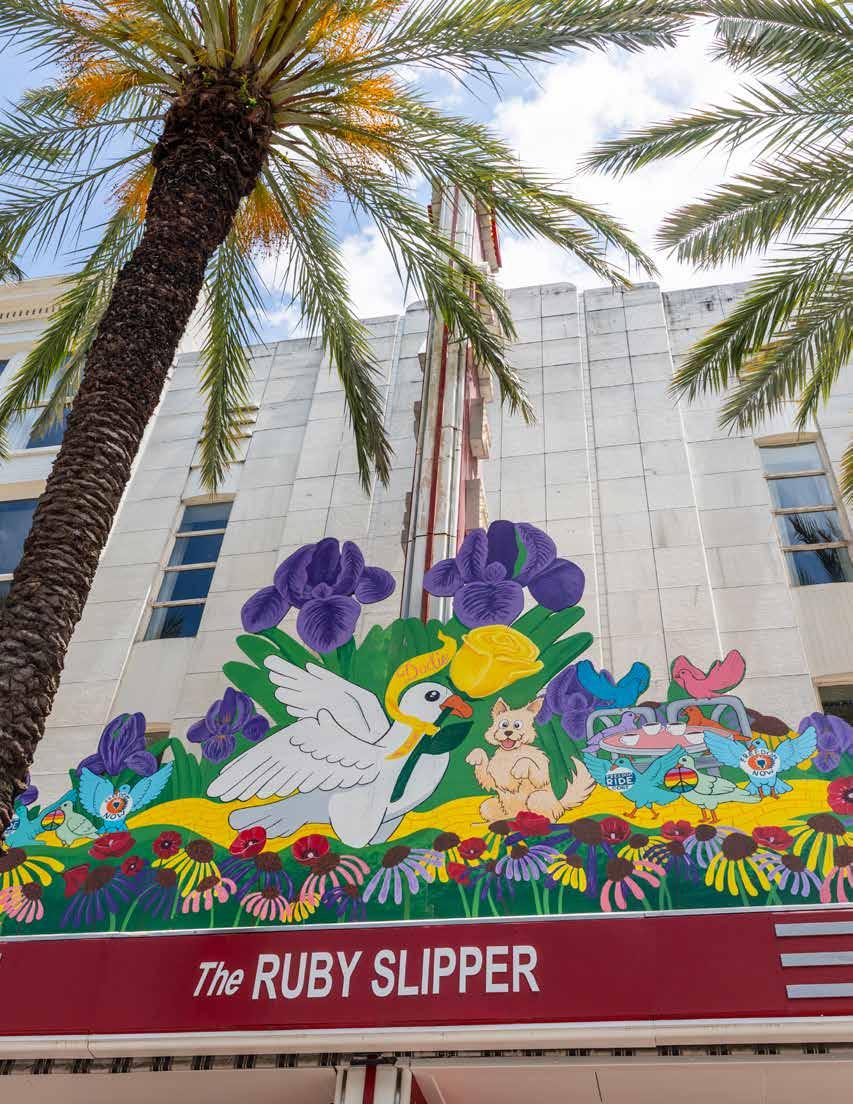
Where work and culture meet what’s possible.

Seth Knudsen PRESIDENT & CEO




Where work and culture meet what’s possible.

Seth Knudsen PRESIDENT & CEO

Charles Bourg CHIEF OF PUBLIC SAFETY & FIELD OPERATIONS
Dr. Michael J. McKnight, Sr. CHIEF FINANCIAL OFFICER
Ren é Pastorek, AICP
CHIEF ECONOMIC DEVELOPMENT OFFICER
Jared Brossett
DIRECTOR OF PUBLIC POLICY & EXTERNAL AFFAIRS
Donald G. Clouse
PUBLIC SAFETY MANAGER
John Roussell
PUBLIC SPACE OPERATIONS MANAGER
Brandon Smith
QUALITY ASSURANCE MANAGER
Esther Boone
MARKETING & COMMUNICATIONS SPECIALIST
Tyler Correa
ECONOMIC DEVELOPMENT SPECIALIST
Dajuantae Riggins
STAFF ACCOUNTANT
Tempestt Woods
ADMINISTRATIVE COORDINATOR
Francia Barradas
CHIEF OF STAFF TO THE PRESIDENT & CEO
Chris R. Ross NAI RAMPART | CHAIR
Alex Glaser JONES WALKER | VICE-CHAIR
William Bradshaw II REIMAGINE DEVELOPMENT PARTNERS | TREASURER
Scott Polakoff RESIDENT | SECRETARY
Gregory Curtis WINDSOR COURT HOTEL
Ryan King DELTA UTILITIES
Edwin Murray LSU HEALTH NEW ORLEANS
David Piscola HILTON NEW ORLEANS
Kenny Rubenstein RUBENSTEINS
Miles Tully, Jr. CAESARS NEW ORLEANS
Frank Zumbo NEW ORLEANS MARRIOTT
Dear Downtown stakeholders,
As we reflect on the second quarter of 2025, it’s clear that Downtown New Orleans continues to evolve with purpose and momentum. This quarter was particularly meaningful as DDD kicked off its celebration of 50 years of service with formal recognition from the Louisiana Legislature for our role in shaping and supporting the city’s commercial and residential heart. It’s a legacy we are honored to uphold and excited to build upon in the future.

From Baton Rouge to Washington, D.C., DDD was active over the past three months in championing Downtown’s future. Our team engaged with federal leaders to advocate for the Revitalizing Downtowns and Main Streets Act, which would provide new tax credits for the conversion of vacant commercial properties into housing. At the state level, DDD worked with State Senator Royce Duplessis and the Orleans legislative delegation to secure a $100,000 capital allocation to fund lighting improvement projects that will enhance Downtown safety and accessibility.
Confidence in Downtown’s future is evident across private investment, civic initiatives, and cultural momentum. High-profile project proposals like the potential $250M conversion of Plaza Tower from vacant office space to senior housing and the $600M redevelopment of the former Charity Hospital to a vibrant biosciences hub including offices, labs, co-working spaces,and residential units reflect a long-term belief in Downtown as a place to live, work, and thrive. Our innovation economy is gaining traction with Haptech Defense Systems being named Louisiana’s Innovative Company of the Year and a lighting master plan completed to support the growing BioDistrict. Further, anticipation is building for New Orleans BioInnovation Center’s annual BioChallenge, set to take place in October 2025, which will showcase neuroscience startups tackling critical challenges. Meanwhile, Downtown’s commercial and cultural landscape continues to evolve with new retail concepts and creative placemaking efforts like Celebrate Canal’s “Windows on Canal,” which transformed landmark storefronts into vibrant art installations, boosting foot traffic and enhancing one of our District’s most iconic corridors.
Tourism and hospitality continued to activate Downtown, driven by marquee events like the EASports Collegiate Championship and developments like the opening of the Mayfair Hotel. In fact, New Orleans & Co. recently reported that visitation and spending in 2024 approached pre-pandemic levels. The residential market remains strong despite a slight uptick in vacancy, with over 6,300 housing units—up from just 2,100 before Katrina—underscoring Downtown’s transformation into a vibrant, mixed-use neighborhood. The office sector is also stabilizing, with declining vacancy rates and renewed investment, including Gayle Benson’s acquisition of 1515 Poydras and Delta Utilities’ expansion into Place St. Charles. Collectively, these developments affirm Downtown’s role as a dynamic engine for business, innovation, and culture across the region.
All of this is more than just growth; it’s momentum. As we celebrate DDD’s 50th year, we do so not just by honoring our past, but by actively shaping a Downtown that is cleaner, safer, and stronger than ever before.
Thank you for your continued partnership and support. We look forward to building on this progress together.
Seth Knudsen President & CEO
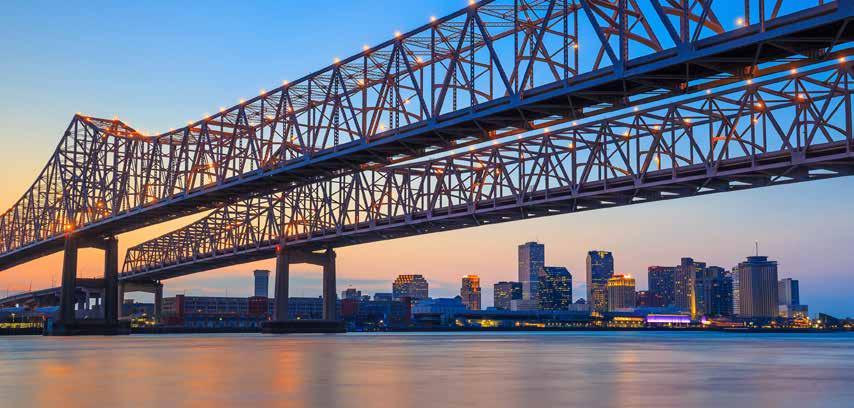
The Downtown Development District of the City of New Orleans (DDD) was created by the Louisiana Legislature in 1974 as the nation’s first assessment-based business improvement district

8.9M Total SF of Class A Office Space
Downtown New Orleans stands as the largest center of employment in the State of Louisiana. Moreover, this collection of neighborhoods represents nearly $1B in assessed property value.
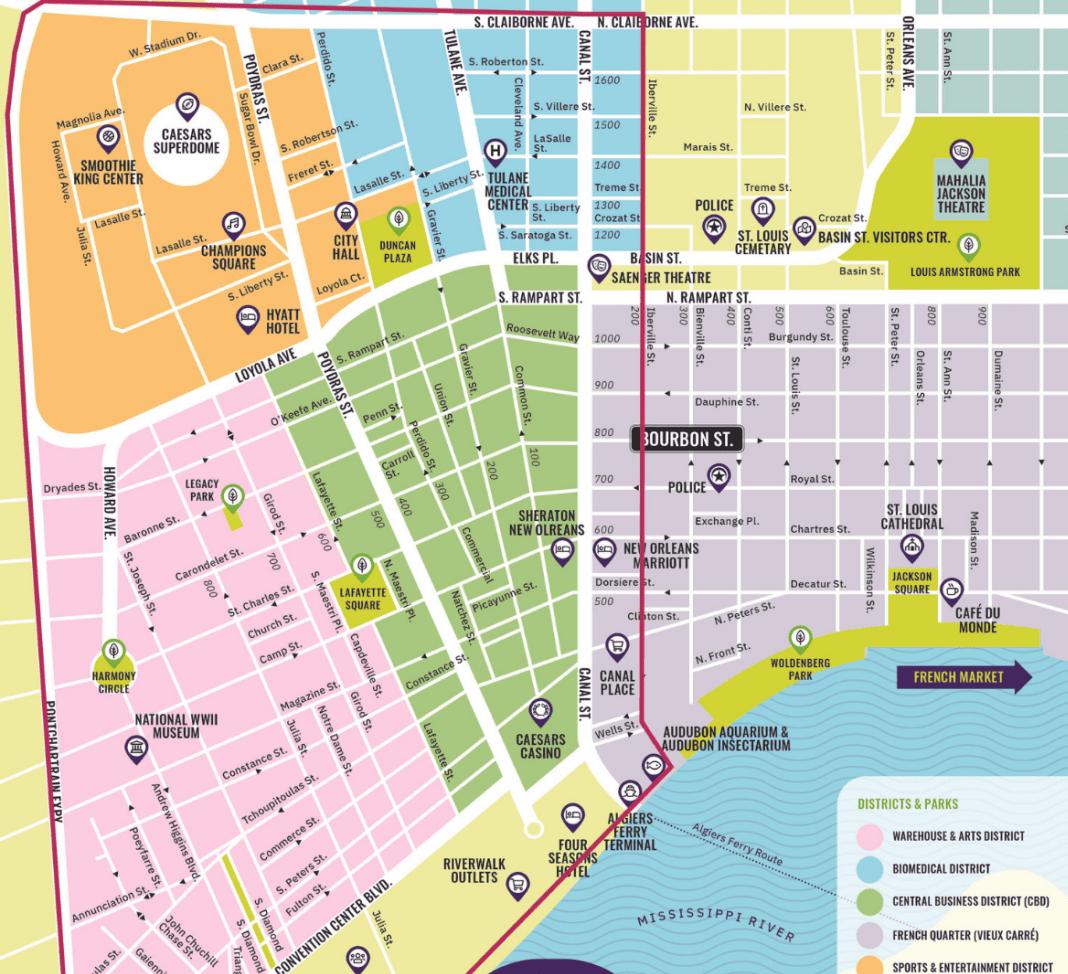
26 Transit Routes
476 Retail Businesses
8 Coworking Spaces and 9 Incubators / Accelerators
105 Hotels and 22,399 Rooms
6,370 Condos / Apartments

The second quarter of 2025 was a landmark period for DDD, marked by critical advocacy efforts, impactful legislation, and recognition of five decades of service to the city. DDD’s partnership at the state
and federal levels continues to reinforce the strategic importance of Downtown New Orleans as a hub for commerce, culture, housing, and innovation.
In April, DDD Director of Public Policy & External Affairs Jared Brossett and Chief Economic Development Officer René Pastorek, AICP, traveled to Washington, D.C. to represent Downtown New Orleans at the International Downtown Association’s Capitol Hill Fly-In. The event brought together place management organizations from across the country to advocate for policy solutions that support the growth and revitalization of Downtowns and main streets nationwide.
While in D.C., the DDD delegation actively promoted the Revitalizing Downtowns and Main Streets Act , a bipartisan legislative proposal aimed at providing financial incentives for the conversion of vacant and underused commercial buildings into housing. This forward-thinking measure has the potential to address both the national housing shortage and the need for more vibrant, mixed-use Downtown districts.
During the Fly-In, Brossett and Pastorek held meaningful discussions with several of the country’s top-ranking elected officials, including House Majority Leader Steve Scalise, Congressman Cleo Fields, and staff from the offices of Speaker Mike Johnson, Senator Bill Cassidy, Senator John Kennedy, and Congressman Troy Carter. These meetings served as a valuable platform for sharing DDD’s perspective on the importance of Downtown investment, and for strengthening relationships that support federal policy alignment with local needs.
May 2025 marked a historic milestone for DDD as the agency kicked off the celebration of its 50th anniversary. Established in 1974 by the Louisiana Legislature, DDD was the first assessment-based business improvement district in the nation, created to
deliver supplemental services in safety, cleaning, and economic development to Downtown New Orleans. To commemorate this milestone, DDD staff and the Board of Commissioners traveled to Baton Rouge in May to be honored by the Louisiana State Legislature. The Louisiana Senate adopted Resolution 72, recognizing DDD’s half-century of service and its enduring role in shaping the future of New Orleans. This recognition was made possible thanks to the leadership of Senators Royce Duplessis, Jimmy Harris, Joseph Bouie, and Gary Carter, as well as Senate President Cameron Henry
In a further show of support, the Louisiana House of Representatives designated May 27, 2025, as “DDD Day at the Capitol.” This special designation underscored the significance of DDD’s legacy and the vital work the organization continues to lead on behalf of the Downtown community. DDD extends its sincere thanks to State Representative Alonzo Knox , along with Representatives Shaun Mena and Jason Hughes, for their advocacy and recognition.
In a major win for Downtown infrastructure and public safety, Louisiana Governor Jeff Landry signed into law Act 461, the Supplemental Appropriation for Fiscal Year 2024–2025, which includes a $100,000 allocation to DDD. These funds are earmarked for lighting enhancements and beautification projects throughout the District to create a safer, more accessible, and visually appealing urban environment. These funds will allow DDD to accelerate improvement projects that enhance both the day-to-day experience of residents and the long-term appeal for businesses, workers, and visitors. Stay tuned to our weekly newsletter and social media channels for updates on how these funds will be deployed in the months ahead.

Downtown New Orleans continues to thrive following Super Bowl LIX, with Q2 2025 marking a turning point for several transformative developments throughout Downtown. Thanks to improved infrastructure, increased national visibility, and rising demand across residential, hospitality, and commercial sectors, Downtown is seeing increased activity in the real estate development sector.
The numbers tell a compelling story: there is nearly $3 billion in planned investment in and around Downtown, tracked by DDD's Economic Development Department. Beyond the numbers, the impact is seen in scaffolding, cranes, leasing activity, and transfers of property that signal a District poised for investment.
A new era of adaptive reuse and reactivation is breathing life into historic structures and long-dormant properties:
• 300 St. Charles Avenue, one of the oldest commercial buildings in the CBD, is currently under construction. Once complete, the building will house the Bienville Club, an upscale social and business gathering space, along with high-end private office suites.
• Just steps away at 210 St. Charles Avenue, a portion of the former Whitney Bank Complex is being carefully restored and reimagined as a 37-room boutique hotel . This project blends architectural preservation with hospitality innovation and adds another layer of vibrancy to one of Downtown’s most iconic corridors.
• On the edge of the BioDistrict, 1000 Howard Avenue —a long-blighted former Archdiocese property—is undergoing renovation to become a 39-unit apartment-style hotel , signaling new vitality for the corridor and improving the connection between Downtown and the adjacent medical and biosciences hub.
• Café Beignet is expanding its well-known brand with a new location currently under construction at the Sheraton Hotel on Canal Street . This addition will bring fresh dining space and a new pedestrian-friendly storefront to one of Downtown’s busiest thoroughfares.
• Construction began at the redevelopment of 333 North Diamond into an 8-unit hotel in the Warehouse District. The project brings new life and vitality to this former warehouse space.
Momentum isn’t limited to active construction— several high-profile real estate deals and planned projects point to continued investment confidence:
• The long-vacant Plaza Tower, a towering fixture on the New Orleans skyline, is once again the subject of active planning. Discussions have begun on a potential conversion into a senior apartments —a transformative use that could breathe new life into the building and surrounding area.
• At 231 Carondelet Street, another historic structure is undergoing adaptive reuse. Notably, award-winning chef Isaac Toups has announced plans to open a new restaurant in the former Cotton Exchange building, adding excitement to the Downtown dining scene.
• In the South Market District, Planet Fitness has signed a lease to take over the former Arhaus space, offering residents and workers expanded fitness options in a walkable, mixed-use neighborhood.
• The Security Center, a unique Downtown property, was recently sold to a local owner with plans to revamp the space into a vault exchange and reception venue, combining function and event programming in a one-of-a-kind historic setting.
• Confidence in the city’s luxury market was reinforced with Miami investment firm Gencom’s acquisition of the Ritz-Carlton New Orleans. The purchase highlights national interest in Downtown New Orleans' hospitality assets and suggests a strong future for high-end tourism and business travel.
From Canal Street to Carondelet, Howard Avenue to St. Charles, Downtown is buzzing with activity that reflects both local pride and global attention. The legacy of Super Bowl LIX goes far beyond a single weekend; it's embedded in the bricks and mortar, blueprints, and business plans shaping a new era for the heart of the city.
As cranes rise and buildings come back to life, these developments are more than just construction projects— they represent confidence, momentum, and a shared belief in the continued evolution of Downtown New Orleans.

Downtown New Orleans’ retail sector saw continued growth and diversification in Q2 2025, building on early-year momentum with a wave of new openings, creative placemaking, and strengthened publicprivate collaboration. The quarter marked a meaningful uptick in activity across the city’s commercial corridors, with new concepts launching, legacy storefronts reactivated, and key strategies deployed to address retail gaps and support long-term occupancy.
The Downtown New Orleans retail market remained stable in Q2 2025, with no change in total inventory or vacancy rate from the previous quarter. Retail space held steady at 5.3 million square feet, and the vacancy rate remained flat at 6.4%. Further, average asking rents declined 6.8% quarter-over-quarter to $27.33 per square foot, reflecting reduced pricing leverage in the market despite stable occupancy.
A highlight of the quarter was the debut of “Windows on Canal,” a creative public art initiative developed by the Celebrate Canal! Coalition in partnership with Where Y’Art Works. This program transformed vacant or underutilized storefronts along Canal Street into temporary art installations, spotlighting the vibrancy of New Orleans’ cultural heritage. By drawing pedestrian interest and media attention, the initiative not only enhanced the corridor’s aesthetic appeal but also encouraged foot traffic and exploration along one of the city’s most historic retail corridors.
Complementing these placemaking efforts, DDD began seasonal maintenance of over 200 palm trees along Canal Street. This initiative will improve visual consistency, safety, and shade along the corridor— reinforcing the street’s identity as a destination for both retail and experience-driven visits.
Windows on Canal is more than just a public art installation—it’s a statement of possibility. By activating storefronts with bold, locally created works, we’re showing the public and potential investors alike that Canal Street is ready to be reimagined. This project is helping restore Canal’s identity as a vibrant, walkable retail destination—one window at a time.
— Sandra Thompson Herman Founder & President Celebrate Canal
Several new tenants opened doors or announced plans during Q2, adding to Downtown’s mix of local, national, and experience-based retail:
• Chef Isaac Toups, of the acclaimed Toups Meatery in Mid-City, announced a new culinary concept for the Cotton Exchange at Carondelet and Girod Street. Armada will bring Spanish and French influenced cuisine to a highly visible corner in the Central Business District.
• Planet Fitness signed a lease to occupy the former Arhaus space in the South Market District, bringing a wellness-focused anchor to the heart of Downtown. The addition will bring daytime activation and helps strengthen the area’s residential appeal by providing accessible fitness amenities.
• Zero Latency, a global free-roam virtual reality entertainment concept, launched its first New Orleans location in the Warehouse District. Blending high-tech gaming with retail and entertainment, the venue is part of a growing wave of immersive experiences redefining what it means to shop, play, and gather in Downtown spaces.
• Karyi Kitchens, a modern Nigerian restaurant, officially opened at Place St. Charles with its unique menu and vibrant atmosphere—adding culinary diversity to the Downtown lunch-time offerings.
• The Secret Spot Flowers, founded by Tey Stiteler, is a design-forward flower farm, studio, and retail shop rooted in sustainability and storytelling, with a storefront directly adjacent to Junebug restaurant and bar in the heart of the Lafayette Square neighborhood.
Retail square footage remained stable in Q2, with modest gains in occupancy reported in the Warehouse District. Leasing momentum was strongest in areas surrounding the Ernest N. Morial Convention Center and South Market , where a series of new lease negotiations are reportedly underway, particularly within properties managed by the Domain Companies. These submarkets continue to benefit from steady foot traffic, eventdriven tourism, and growing residential density.
DDD advanced its retail strategy this quarter by hosting a Brokers Roundtable, convening professionals from top local firms to share insights on Downtown leasing trends, challenges, and emerging opportunities. Discussions focused on activating long-vacant storefronts, simplifying the permitting process, and improved quality of life.
Insights gathered from the roundtable can be used to support DDD’s strategic planning, with a focus on:
• Targeted business recruitment
• Permitting navigation support for prospective tenants
• Ongoing broker collaboration to close leasing gaps and improve matchmaking between landlords and retailers
As Downtown continues to evolve, the retail environment is becoming more dynamic, diverse, and experience-driven. DDD remains committed to supporting this momentum through strategic partnerships, placemaking efforts, and direct engagement with tenants and property owners alike.



Source: City of New Orleans Department of Safety & Permits 3 61,363 12 Seeking Entitlement

From biotechnology and defense systems to adaptive reuse and digital entertainment, Downtown New Orleans is witnessing transformative investments, pioneering ideas, and strategic collaborations that help shape the future of our city’s innovation economy.

A major milestone was achieved this quarter with the completion of the Downtown BioDistrict Lighting Gap Analysis and Concept Identification Plan, developed by local design firm Studio West and presented to the BioDistrict New Orleans Board of Commissioners. This initiative builds directly on the broader BioDistrict Strategic Plan, crafted by HR&A Advisors and funded by the Greater New Orleans Foundation, the City of New Orleans, and DDD, with the goal of transforming the BioDistrict into a premier center of scientific and economic activity.
The lighting plan prioritizes both public safety and place identity, recognizing that well-lit streets and gathering spaces are critical to creating a safe, walkable, and vibrant innovation district. Key lighting initiatives identified in the plan include:
• Underpass lighting at gateways underneath the elevated expressway on Claiborne Avenue to improve pedestrian visibility and security
• Architectural and tree uplighting along Loyola Avenue and LaSalle Street to enhance the nighttime safety and character of the corridor
• Coordinated lighting and wayfinding systems among district partners to create a unified user experience
With this plan now finalized, DDD can begin identifying funding sources and partnerships to move these projects into implementation. Further, the plan marks a critical step forward in the BioDistrict’s development and serves as a model for combining infrastructure improvements with economic development and placemaking.

Innovation in Downtown New Orleans continues to gain national and international attention through events like the New Orleans BioInnovation Center’s (NOBIC) annual BioChallenge, now accepting applications for the 2025 competition. Scheduled for October 30, 2025, this high-energy pitch event invites early-stage biotech startups to compete for cash prizes, investor interest, and media exposure.
This year’s challenge has a timely and impactful theme: neuroscience. With over one-third of the global population affected by neurological conditions, according to the World Health Organization, the 2025 BioChallenge aims to spotlight and support startups working on innovative solutions in this critical space. Companies focused on diagnostics, therapeutics, digital health, brain-computer interfaces, and more will take center stage as they present cuttingedge approaches to some of the most challenging and widespread health issues of our time.
DDD is proud to be a supporter of this event and active participant as a member of the BioChallenge planning committee—a testament to DDD’s active role in shaping and promoting Downtown’s biotech future. Interested entrepreneurs and innovators can apply now through the NOBIC website, and members of the public are encouraged to attend this exciting showcase of Downtown New Orleans’ growing biotech community.
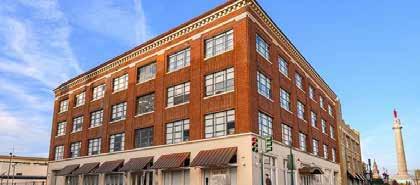

Downtown New Orleans’ emerging tech sector scored a major win as Haptech Defense Systems was named 2025 Louisiana Innovative Company of the Year by Louisiana Economic Development (LED). Based in the heart of Downtown’s Arts District, Haptech has developed a breakthrough in electromagnetic recoil systems (ERS), which simulate real-world firearm responses to dramatically enhance training for military and law enforcement agencies.
This honor comes as Haptech prepares to launch its ERIS product line—its first commercially available suite of adaptive training tools—and successfully fulfills a significant contract with the United States Army, equipping soldiers with advanced, realistic combat training solutions.
Looking to the future, Haptech has signed a Letter of Intent with LED FastStart, Louisiana’s premier workforce development program, to recruit and train local talent in engineering, advanced manufacturing, and defense innovation. The company plans to add 10 new highskill jobs at its Downtown headquarters, further anchoring its operations in New Orleans and contributing to the city’s fast-growing innovation economy.
“Haptech is exactly the type of company LED is proud to support,” said LED Chief Innovation Officer Josh Fleig in a recent Biz New Orleans article, noting its alignment with the state’s broader vision of a tech-forward, talent-driven future.

One of the most ambitious developments advanced this quarter was the announcement that $20 million from the Edward Wisner Donation (Wisner Trust) will be allocated by the City of New Orleans to the redevelopment of the historic Charity Hospital building.
Once complete, this transformative project will reactivate the long-vacant building into a $600 million mixed-use
life sciences and innovation campus. Tulane University has committed to leasing up to 500,000 square feet—its largest Downtown footprint to date. Among the plans for the structure, the project will include:
• Biomedical and public health research labs
• Academic classrooms and collaboration spaces
• Public plazas, retail shops, and dining venues
• Up to 300 residential units, including 150 for middle-income households
In all, the redevelopment is projected to generate over 2,300 new jobs and establish Downtown as a regional and national leader in science, health, and community-focused urban development.
“This once-in-a-generation reimagining of Downtown includes the planned transformation of the former Charity Hospital building into a premier center of scientific exploration, breakthroughs, and advancements that will improve lives,” said Tulane University in its announcement. DDD celebrates this landmark development and its future contributions to the neighborhood’s vitality and inclusive growth.

The digital entertainment and game development industry continues to expand its footprint in Downtown New Orleans, with Game Fête 2025 serving as a marquee event for the region’s creative tech community.
Held in late April and sponsored by DDD, Game Fête brought together indie developers, gamers, investors, and educators for a multi-day celebration of Louisiana’s growing presence in the national game development scene. The event was produced by GNO, Inc. and Louisiana Innovation (a new division of LED), and featured a full slate of interactive programming.
Game Fête reinforced Downtown’s emerging status as a digital media hub, with DDD’s continued support ensuring that New Orleans remains at the forefront of this exciting, high-growth sector. The organization remains committed to fostering inclusive, creative, and tech-driven economic development that reflects the city’s unique culture and talent base.
As these projects and initiatives demonstrate, Downtown New Orleans is undergoing a tech and innovation renaissance—one rooted in bold partnerships, local talent, and a shared commitment to building a future-ready urban economy. Whether through biotech breakthroughs, defense innovation, digital creativity, or world-class research campuses, Q2 2025 reaffirmed that Downtown is not only open for business—it’s leading the way.
Downtown New Orleans’ hospitality and tourism sector delivered strong performance in Q2 2025, driven by sustained visitor demand, key hotel developments, and a continued rebound in major event programming. The latest metrics from New Orleans & Company reveal promising trends that reinforce Downtown’s role as both the historic heart and economic engine of the city’s tourism ecosystem. Moreover, total visitation to the Greater New Orleans region reached 19.2 million in 2024 —surpassing pre-pandemic benchmarks and marking only the second time in the city’s history that visitor numbers exceeded 19 million. This resurgence in travel and tourism culminated in $10.4 billion in visitor spending , a new all-time high.
The Downtown New Orleans hotel market saw softening conditions in Q2 2025. Demand declined 3.8% year-over-year while supply grew slightly by 0.5%, contributing to a 2.4% drop in average occupancy to 64.0%. The average daily rate (ADR) fell 3.4% to $187.61, and revenue per available room (RevPAR) dropped 8.2% to $121.11, signaling weaker pricing power and reduced revenue performance compared to the same quarter in 2024.
Q2 brought several high-profile events that bolstered mid-week occupancy and extended average length of stay. In April, the Ernest N. Morial Convention Center welcomed the EA Sports Collegiate Championship, a premier digital gaming and e-sports event that drew thousands of attendees and national media attention. The success of this event highlights Downtown’s growing status as a preferred destination for interactive entertainment and next-generation conferences. Later in May, the long-awaited Mayfair Hotel officially opened on Canal Street, following an extensive renovation of a historic structure. The boutique hotel added 32 luxury units consisting of 72 bedrooms to Downtown’s growing inventory, with a strong emphasis on design, guest experience, and proximity to the CBD’s business, dining, and nightlife offerings.
Downtown’s legacy institutions also contributed to the sector’s strong quarter, offering dynamic cultural experiences that attract both repeat and

first-time visitors. Most notably, the National World War II Museum —one of the most visited attractions in the U.S.— officially broke ground on its Floyd Education and Collections Pavilion, a new complex that will support the Museum’s growing efforts to produce more exhibits, preserve its macroartifacts, and expand its leadership programs.
The new Pavilion, located at 1042–60 Magazine Street, was made possible through a $7.5M gift from longtime Museum supporters Timber and
ACTIVE HOTEL PROJECTS
Total 544 380 5 166 3 Projects | Rooms Under Construction Entitled
14 Seeking Entitlement
6 1,090
Source: City of New Orleans Department of Safety & Permits

Peggy Floyd, whose donation will be used to create a two-story space dedicated to the continued education of people from across the country and around the world.
This space will include an exhibition design and production center, allowing the Museum to centralize and expand its work to develop new special exhibits at its New Orleans campus and beyond. Additionally, it will house several vehicles and oversized collection artifacts, returning historic treasures previously stored off-site. The second floor of the Pavilion will operate as the new Sanderson Leadership Center, which will create space for the Museum to develop and offer a full slate of signature leadership programs based on the events and lessons of World War II.
“We are deeply grateful to the Floyds for their generosity and commitment to educating future generations about the history of World War II. This gift will have a significant impact as our institution strives to teach and inspire new audiences,” said Stephen J. Watson, President & CEO of The National WWII Museum. “As the Museum enters the next chapter in its history, the Floyd Pavilion will ensure this history is kept alive, relevant, and accessible for learners of all ages and backgrounds.”
The variety of experiences now available in Downtown New Orleans—from e-sports championships and boutique hotels to world-class museums and festivals—speaks to a maturing and diversified tourism ecosystem. Downtown successfully blends the large-scale infrastructure needed for major conventions with the walkability, cultural authenticity, and charm that appeal to leisure travelers seeking unique, place-based experiences.
With new hospitality concepts continuing to enter the market, the outlook for Downtown tourism in the second half of 2025 remains positive.


While rents and pricing held relatively firm this past quarter, Q2 saw a slight rise in residential vacancy and negative absorption pointing to short-term challenges in renter demand. Still, flat inventory levels and steady year-to-date pricing suggest that the Downtown multifamily market is not oversupplied. The coming quarters will determine whether elevated vacancy is a temporary fluctuation or the start of a broader cooling trend. Nonetheless, market fundamentals remain generally stable.
Looking at the long-term market, one of Downtown New Orleans’ tallest buildings may finally be on the path to revitalization, potentially offering a major boost to the local multifamily housing market.
The long-vacant Plaza Tower, an aging 45-story skyscraper that has sat empty since 2002, may soon be converted into affordable senior housing, according to a recent article by the TimesPicayune. Discussions are currently underway between property ownership and Lincoln Avenue Communities (LAC), a California-based affordable housing developer known for historic rehabilitation projects across the country.

The plan would transform the blighted structure, located at Howard and Loyola avenues across from Union Passenger Terminal, into a residential complex aimed at elderly tenants with income restrictions.
LAC has a proven track record in Downtown New Orleans, having led the $35 million rehabilitation of Tivoli Place Apartments on St. Charles Avenue, a senior housing project for residents earning between 20% and 60% of the area median income. David Garcia, LAC’s regional lead, confirmed to the Times-Picayune that conversations with the City and key stakeholders are progressing: “We have begun meetings with city and state stakeholders and are continuing to investigate the feasibility of this exciting project.”
Again, whether this uptick in vacancies signals a temporary market adjustment or the start of a longer trend remains to be seen. Still, fundamentals remain stable, and the Plaza Tower project—if executed—could provide a meaningful jolt of energy and investment to Downtown’s multifamily sector.
As part of a research project analyzing the transformation of Downtown over the two decades since Hurricane Katrina, DDD recently highlighted the strength of the residential market. Over the past 20 years, Downtown New Orleans has undergone a

remarkable transformation in its residential landscape, marking a dramatic evolution from a traditional business district into a vibrant, mixed-use urban neighborhood. This shift is most clearly reflected in the area’s population growth, which has nearly doubled—from just over 2,000 residents in the year 2000 to more than 4,300 today. This demographic expansion has been accompanied by a corresponding boom in housing stock. Prior to Hurricane Katrina, there were 2,103 housing units in the Downtown core; as of mid-2025, that number has grown to over 6,300 units, effectively tripling the area’s residential capacity and solidifying Downtown’s status as one of the city’s most dynamic places to live.
This growth has not occurred by accident, but rather through a deliberate series of public-private investments and strategic real estate developments that prioritized density, design, and modern amenities. Landmark multifamily developments like The Standard at South Market , developed by Domain Companies, introduced high-rise luxury living with features such as rooftop pools, fitness centers, and ground-floor retail. These developments raised the bar for what residents could expect in an urban living experience. Similarly, The Julia brought a boutique-style residential feel to the Warehouse District, integrating sleek interiors and curated art collections into its brand identity. Another transformative addition was 930 Poydras, a 21-story
mixed-use tower that set a new precedent for scale and scope in Downtown multifamily construction. Each of these projects not only introduced hundreds of new housing units but also contributed to a growing sense of community and vibrancy in the urban core.
Walkability and access to everyday amenities have played a central role in attracting residents to Downtown. The arrival of essential retailers like Rouses Market at the corner of Baronne and Girod Street filled a long-standing need for a full-service grocery store within walking distance of most Downtown residences. Its opening marked a pivotal moment in Downtown’s residential maturation, bringing a level of convenience that made living in the area more feasible for a broader demographic—including families, young professionals, and retirees.
Moreover, Downtown’s multifamily market has benefited from broader urban trends that prioritize sustainability, connectivity, and mixed-use planning. Residents today are not just looking for a place to live. They are seeking environments that support a live-work-play lifestyle. Proximity to the abundant cultural offerings, nearby transit connections, and a growing roster of dining, fitness, and retail options all contribute to Downtown’s appeal as a place to not only work but thrive.

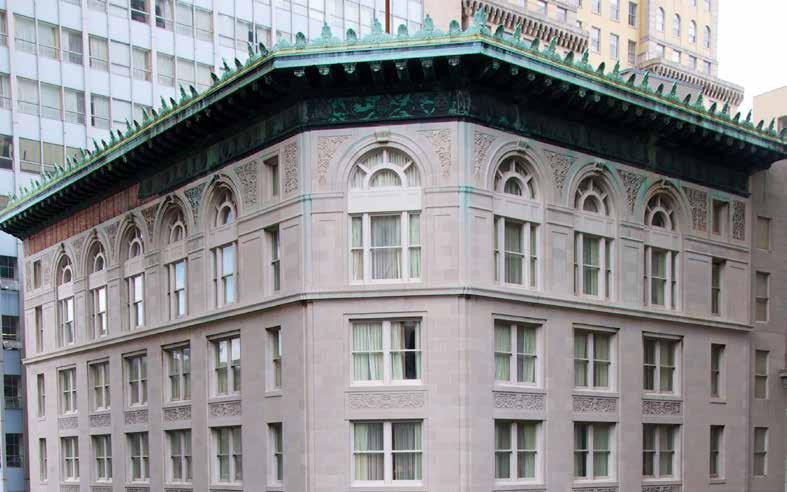
Downtown New Orleans’ office market remained steady in Q2 2025, with total office inventory at 16.7 million square feet and Class A inventory unchanged at 8.9 million square feet. The overall vacancy rate improved slightly to 12.6%, down from 13.4% the previous quarter, while Class A vacancy edged down from 19.4% to 19.2%. Average asking rents rose modestly—up 0.9% quarter-over-quarter to $19.57 per square foot—signaling continued confidence among property owners despite elevated vacancy in higher-end buildings. These incremental gains suggest a cautiously optimistic outlook as the market moves into the second half of the year.
Investor sentiment strengthened during the quarter, led by the announcement that Gayle Benson will acquire 1515 Poydras Street—a 27-story Class A office tower. Completed in 1983, 1515 Poydras encompasses nearly 529,000 leasable square feet of office space and includes a 494-space in-building parking garage. It occupies a full city block bounded by Poydras, Perdido, LaSalle,
and Freret Streets, directly within the Central Business District and abutting both the Sports and Entertainment District and the Downtown BioDistrict. Corporate Realty will manage the property, reflecting a significant institutional commitment to Downtown’s commercial core.
“Mrs. Benson’s commitment and vision are very apparent in her confidence in the Downtown business corridor. And that continues with Corporate Realty, which has long been an advocate for continued Downtown development and investment in professional jobs that will help our city fulfill its full potential,” said Michael J. Siegel, President of Corporate Realty, to Biz New Orleans. “As with Mrs. Benson, we remain confident about the future of Downtown New Orleans and believe that Mrs. Benson’s acquisition of 1515 Poydras is an important step in connecting the business community to the Medical District and to the Sports and Entertainment District of New Orleans.”
In another significant neighborhood development, Delta Utilities continues to deepen its roots as a headquarters operation Downtown through its acquisition of CenterPoint Energy, Inc.’s
Louisiana and Mississippi natural gas systems. This transformative move, along with the acquisition of Entergy’s natural gas operations in New Orleans and Baton Rouge this summer, positions Delta Utilities among the nation’s top 40 natural gas providers, with assets valued at approximately $1.7B and a growing customer base of nearly 600,000 across the Gulf South.
As the company expands its regional footprint, its Downtown headquarters at 201 St. Charles Avenue stands as a major economic anchor, driving employment growth, increasing corporate investment and reinforcing Downtown’s strategic importance as an energy and infrastructure hub. Signed in Fall 2024, Delta Utilities’ lease at Place St. Charles represents both the largest neighborhood Class A lease in the past 5 years and one of the largest leases in the last decade. Overall, the new headquarters is anticipated to lead to as much as $337M in economic output, 885 annual employment opportunities in the New Orleans area, and $15M in local and state tax revenues.
Leasing activity improved across multiple properties this quarter. Corporate Realty reported new tenants iCARE Relief FSG and Mansfield, Melancon, and Cranmer at One Canal Place. As well, the firm anounced that the Energy Centre saw a series of new leases and renewals with firms including Morgan Law Group, Young Law Firm, LeGlue & Company, Couhig Partners, Sakla Law Firm, and YouthForce NOLA—demonstrating ongoing demand from legal and professional services.
While Class A vacancy remains above historical norms, long-term transactions such as 1515 Poydras and new corporate anchors point to renewed confidence in the Downtown market. DDD continues to partner with brokers and property owners to provide tenant incentives, support adaptive reuse, and streamline
leasing efforts. As hybrid work stabilizes and companies prioritize location, infrastructure, and amenities, Downtown New Orleans is regaining its footing as a vibrant and competitive office destination.
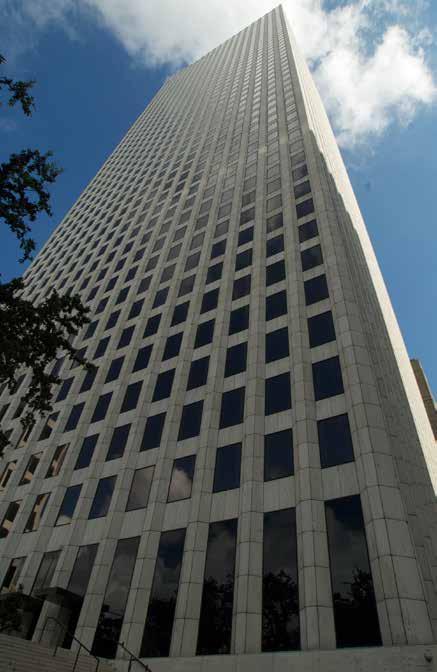
SOURCE: CITY OF NEW ORLEANS DEPARTMENT OF SAFETY & PERMITS 0 607,103 5 Seeking Entitlement Total 107,10 0 4 500,000 1 Under Construction Entitled
SOURCE: COSTAR

Located in the heart of Downtown, Union Passenger Terminal (UPT) remains Louisiana’s busiest train station—and a critical hub for national and regional connectivity. Opened in 1954 and steeped in transportation history, UPT continues to serve as a launching point for travelers journeying to and from major cities like Chicago, New York, and Los Angeles via Amtrak’s City of New Orleans, Crescent, and Sunset Limited routes. In Fiscal Year 2024, UPT welcomed more than 170,000 Amtrak passengers, an 8% increase from the previous year and a strong indicator of postpandemic recovery and growing rail demand. That momentum is expected to accelerate this summer with the long-anticipated launch of Amtrak’s Mardi Gras Service, a new daily rail line connecting Downtown New Orleans to Mobile, Alabama with multiple stops across the Mississippi Gulf Coast.
The Mardi Gras Service will feature two round trips per day, catering to both commuters and leisure travelers while supporting broader economic development along the Gulf corridor. With its strategic location and expanding service, UPT continues to evolve from a historic train station into a multimodal mobility hub linking the region’s people, neighborhoods, and opportunities.
This spring, Downtown’s signature concert series, Wednesday at the Square (WATS), returned for another unforgettable season. Hosted in Lafayette Square and presented by the Young Leadership Council (YLC), WATS brought together 50,000+ visitors over eight weeks, acting as both a cultural celebration and a powerful catalyst for Downtown mobility. Featuring 34 local restaurants and artists and 24 musical acts, including local legends like The Soul Rebels and Motel Radio, the 2025 WATS series celebrated the city’s rich music and culinary scenes while generating over $650,000 in direct economic impact .
WATS didn’t just activate the Square—it rippled across the entire District. According to data from Placer.ai, attendees frequently explored Downtown before and after performances, stopping at nearby businesses, restaurants, and attractions such as Canal Place and Caesars New Orleans. On its busiest night, April 26, WATS drew an estimated 8,500 attendees, kicking off Jazz Fest Weekend with unmistakable New Orleans energy.
DDD was proud to sponsor this cornerstone community event and thanks YLC for its continued leadership. WATS exemplifies the power of culturedriven mobility to activate Downtown and create positive economic ripple effects citywide.
The second quarter of 2025 saw Downtown New Orleans welcome approximately 3.1 million unique visitors, with special events and major attractions drawing significant crowds and driving foot traffic across the District. Further, Downtown saw a total of 9.3M visits over the past quarter.
Between April 1 and April 5 alone, nearly 218,000 visitors descended upon Downtown for a packed lineup of events, including:
• Monster Jam at Caesars Superdome
• Paul Simon in concert at the Saenger Theatre
• Crescent City Classic race event
• Pelicans regular season games
During this five-day window, the Superdome, Smoothie King Center, and key entertainment venues were filled with locals and out-of-town guests, showcasing Downtown’s role as the region’s leading destination for sports, music, and large-scale cultural events.
Continued investment in pedestrian-friendly streets, public transit access, and collaborative
safety efforts ensures that Downtown remains welcoming and navigable for both residents and visitors alike during these high-impact moments.
From trains and concerts to festivals and sporting events, mobility in Downtown New Orleans is about more than movement—it’s about connection. Whether through expanding rail access, drawing thousands into the city for weekly music events, or hosting nationally recognized attractions, Q2 made it clear: Downtown is not only the heart of the city—it’s the crossroads of its future. As infrastructure investments continue and transit options evolve, DDD remains committed to supporting mobility solutions that are equitable, efficient, and inspiring for everyone who lives in, works in, and visits Downtown.

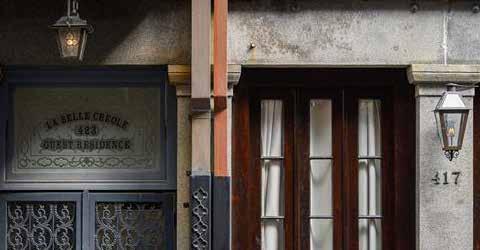
Retail/
Retail/
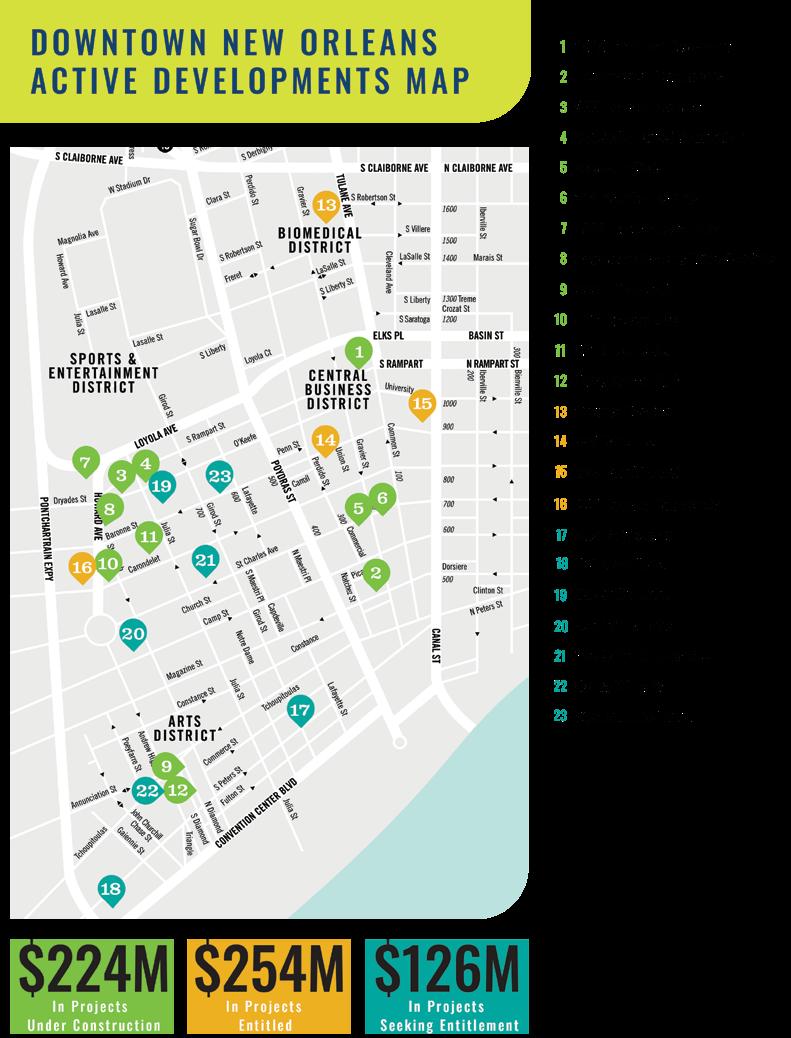


Downtown Development District of the City of New Orleans
201 St. Charles Ave, Ste 3912
New Orleans, LA 70170 | 504.561.8927
Created by the Louisiana Legislature in 1974 (LA Rev Stat § 33:2740.3) as the nation’s first assessmentbased Business Improvement District, the Downtown Development District of the City of New Orleans (DDD) provides enhanced economic development and public space services to Downtown New Orleans. It accomplishes its mission through initiatives such as employing dedicated city planners to assist Downtown property and business owners, administering multiple grant programs, employing Public Safety Rangers and Clean Team sanitation workers, providing significant funding for outreach to the homeless and additional New Orleans Police Department patrols and armed private security throughout the District. The DDD services the area bounded by Iberville Street, the Pontchartrain Expressway, Claiborne Avenue, and the Mississippi River.
DDD is funded by a property tax millage assessed on each non-exempt property within the District. DDD’s lifespan was initially ten years, and on December 8, 1979, a successful citywide referendum secured longevity for DDD. It authorized DDD to raise its property tax rate to as much as 22.9 mills (a privilege the DDD has never exercised); it gave DDD the authority to sell up to $7.5 million in bonds for use in capital improvement projects; it extended DDD’s lifespan for an additional 25 years to December 31, 2005; and it provided for a future election in which voters could extend DDD for an additional 25 years beyond 2005. An election was held on April 7, 2001, with 60% voting in favor, and DDD’s lifespan was extended through 2030.